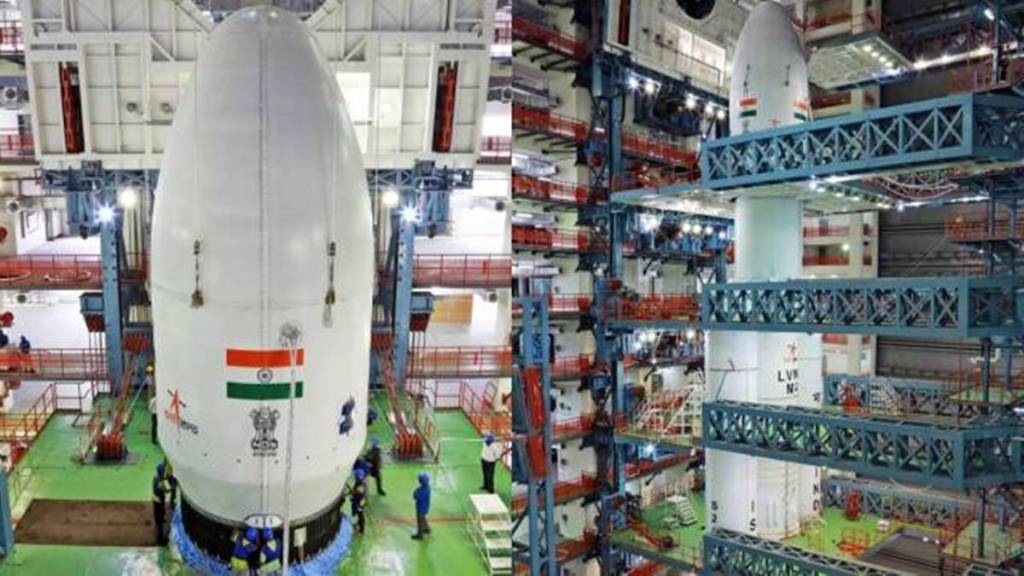The upcoming Chandrayaan-3 mission is getting closer to its launch date. Missions of Chandrayaan-2 and Chandrayaan-3 are quite similar, with the main difference being that Chandrayaan-2 included an orbiter, while Chandrayaan-3 will not have one. Chandrayaan-3 is set to be launched on July 14, 2023, at 2:45 pm IST, which comes approximately four years after the launch of Chandrayaan-2 on July 22, 2019.
Chandrayaan-3 will essentially be a replication of Chandrayaan-2, but without an orbiter carrying eight functioning instruments. Just like its predecessor, Chandrayaan-3 will be launched into space utilizing the Geosynchronous Satellite Launch Vehicle Mark III or Launch Vehicle Mark III
What went wrong with Chandrayaan-2?
During a mission led by the Indian Space Research Organisation (ISRO), the Vikram lander experienced a loss of communication less than two minutes before its planned landing on the moon. The lander was a mere 2.1 km away from achieving a significant milestone as the first-ever spacecraft to softly land near the lunar South Pole.
The lander of the Chandrayaan-2 moon mission was attempting a controlled landing near the lunar South Pole, a region believed to potentially contain water ice. It initiated its descent at 1:38 am on September 7, 2019, taking 10 minutes to reduce its speed from 1,640 meters per second to 140 meters per second. Unfortunately, communication with the lander was lost during the critical final phase as it approached the moon’s surface.
The former chairman of ISRO referred to the final 15 minutes of the mission, during which the lander relied on its own propulsion to guide itself, as a period of intense anxiety often referred to as the “15 minutes of terror.”
According to a recent statement by ISRO chairman Sreedhara Somanath, the crash was attributed to a software malfunction.
On the other hand, it should be noted that the Chandrayaan-2 orbiter successfully entered its intended orbit. Approximately 90 to 95 percent of the mission objectives of Chandrayaan-2 have been fulfilled.
How Chandrayaan-3 is different from Chandrayaan-2
Chandrayaan-3 differs from Chandrayaan-2 mainly in two ways. Firstly, it won’t have an orbiter like its predecessor. Secondly, it will carry a payload called Spectro-polarimetry of HAbitable Planet Earth (SHAPE), which Chandrayaan-2 did not have. The propulsion module of Chandrayaan-3 will be equipped with SHAPE.
SHAPE, aims to collect data on the polarization of light reflected by Earth. This data will be useful for scientists in their search for other planets that exhibit similar light signatures.
ISRO engineers and scientists have also modified both the software and hardware components of the upcoming Chandrayaan-3 mission, specifically focusing on the lander thrusters, after learning from the challenges faced during Chandrayaan-2. The team has devised enhanced sequences for soft-landing and made several improvements to the lander, including the use of four thruster engines instead of five, stronger legs, extended solar panels, and an increased fuel capacity.
Vikram, the lander of Chandrayaan-3, will have the ability to generate power even if it lands in a different orientation and is not directly facing the Sun because of the extended solar panel
ISRO has not officially shared a report explaining the reasons behind the failure of Chandrayaan-2. However, according to a retired ISRO engineer, the failure was attributed to a lack of gradual reduction in speed, known as “throttling,” by the engines during the descent to the lunar surface.
ISRO has also enhanced the landing velocity of Chandrayaan-3 Lander from 2m/second to 3m/second, as stated by Somanath. This adjustment ensures that even at a velocity of 3m/second, the lander will not crash or damage its legs.
According to another scientist from the Chandrayaan-2 team a landing velocity of approximately 2m/second is considered safe and ideal. The allowance for a tolerance of up to 3m/second means that the lander can still fulfill its objectives even if the conditions are not optimal.
Furthermore, additional fuel has been incorporated into the lander of Chandrayaan-3 to better manage potential disruptions and provide the capability to recover if needed. This increase in fuel capacity offers a greater margin for handling the mission effectively.
ISRO has included a new sensor on the lander called the laser Doppler velocity meter in Chandrayaan-3. This sensor will help study the lunar surface by using laser technology to measure different components of velocity. By adding this sensor to the existing instruments, it improves the accuracy of measurements and provides a backup in c, ase of any issues.
ISRO has made enhancements to the software of Chandrayaan-3 to handle potential failures such as engine disruptions, thrust issues, and sensor failures more effectively. Additionally, they have removed the central or fifth engine, which was added last-minute during Chandrayaan-2. These improvements aim to increase the mission’s resilience and reliability.
The Chandrayaan-3 lander is equipped with “lander hazard detection & avoidance cameras” to aid in coordination with the orbiter and mission control during the landing process on the moon. For this mission, there will be two cameras instead of one onboard Chandrayaan-3. These cameras play a crucial role in identifying potential hazards and avoiding them for a safer descent to the lunar surface.
According to the ISRO chairman, a significant portion of the preparations for Chandrayaan-3 involved extensive testing rather than making changes. Over the past two years, a substantial number of tests have been conducted, surpassing the testing done during Chandrayaan-2. These tests included autonomous flights, helicopter flights, simulated landings using cranes, drop tests, and the development of software simulations to assess potential failures and recovery options.


